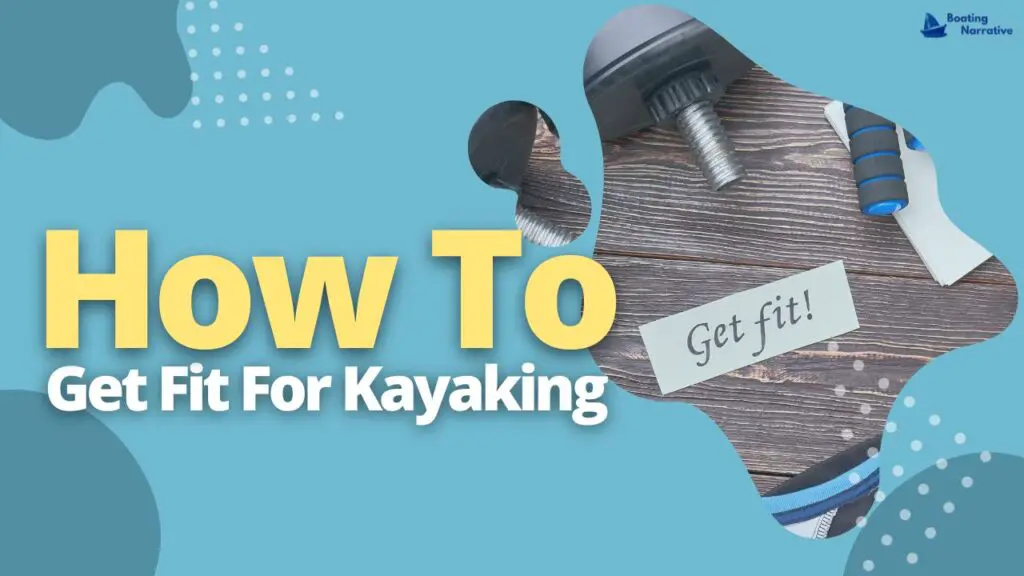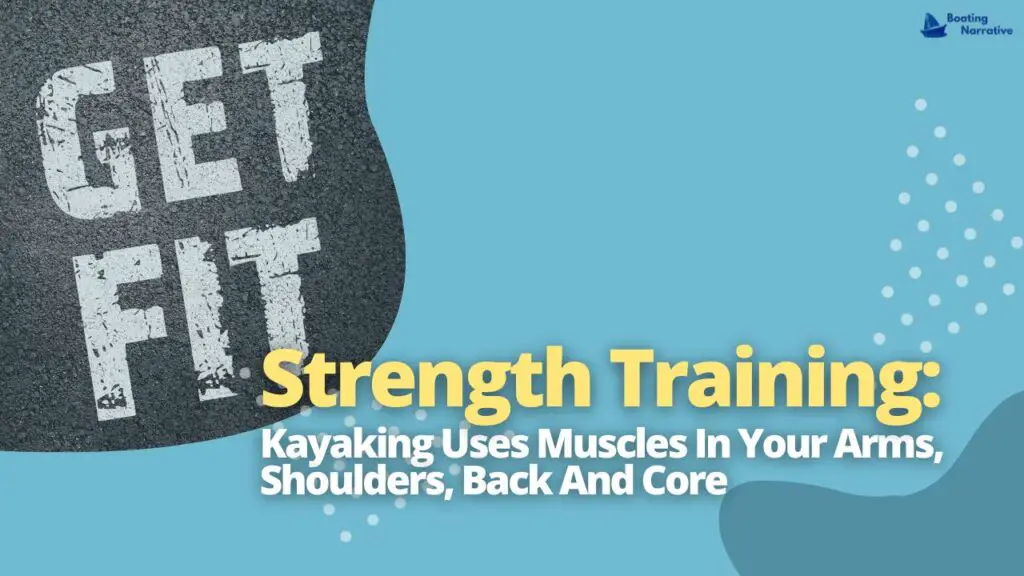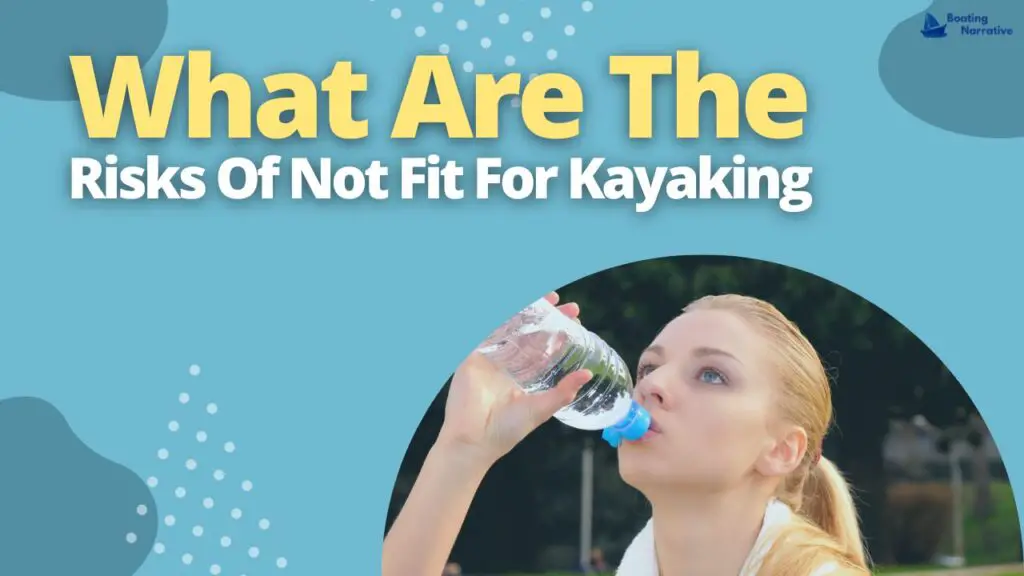The best way to get fit for kayaking is to begin a regular exercise routine that includes cardio and strength training. Swimming is also a great way to get your body used to the idea of being in the water for extended periods of time.
If you’re looking to start kayaking or get back into it after some time off, you must ensure you’re physically prepared for the activity.
Key Takeaway’s
- Kayaking is a great way to get fit and have fun at the same time.
- To be able to kayak properly, you need to be in good physical shape.
- Some specific exercises will help you get in shape for kayaking.
- Swimming is a great exercise for kayakers, as it helps build upper body strength.
- Kayakers should also focus on core strength and endurance, which are important for paddling.

Here’s The Answer To How To Get Fit For Kayaking
Getting fit for kayaking is not as difficult as it may seem. To ensure that you are in peak condition for your upcoming kayaking vacation, there are a few essential things you can do.
Make sure that you are getting enough cardio exercise. This will help ensure that your heart and lungs are in good shape and that you have the endurance to paddle for long periods.
Kayaking is a great workout, but it is also important to supplement it with other forms of exercise.
Don’t forget to stretch! Stretching before and after your kayaking trips will help to prevent injuries and keep your muscles loose and flexible.
Following these simple tips ensures that you are in great shape for your next kayaking adventure.
The Key To Getting Fit For Kayaking Is Building Core Strength, Upper Body Strength, And Leg Strength

The key to getting fit for kayaking is building core, upper body, and leg strength.
Why is this important? Because paddling requires a lot of work from your core muscles. Your core comprises the muscles in your back, stomach, and hips that stabilize you while you move.
These same muscles also help keep you balanced while moving through water or on land—especially for paddling.
Core Strength

When you’re on the water, core strength is your friend. You can balance the kayak, paddle more effectively, and lift the kayak onto the car’s roof with its assistance.
- Core exercises like crunches and planks are good for working out general strength in that area, but focusing on specific muscles is also important. Consider spending some time strengthening those abdominal muscles with a program like this one from fitness expert Jillian Michaels or this one from Men’s Health magazine if it has been a while since you last performed a sit-up (or even if you have).
- You can also strengthen your core by doing exercises while standing up—like planking while holding weights at arm’s length in front of you—or laying down—like lying face-up with knees bent and feet flat on the floor, then raising hips off the surface without using hands for assistance.
Upper Body Strength
The upper body strength required for kayaking is not the same as for a powerlifter or bodybuilder.
Although you do need to be able to move and lift your paddle, there are many other things you will be doing with your arms while kayaking.
This requires balancing strength and flexibility to avoid injury and maximize performance.
For example, when paddling forward, the back muscles hold the paddle in place while pushing it back against an opposing force of water resistance (more like swimming than biking).
Leg Strength
Getting fit for kayaking means building strength in your legs. This will help you paddle, but it’s also important for stability on the water.
The best exercises for building leg power are squats and lunges, which can be done with ease by standing up straight with your feet apart and bending forward at the waist until your hands touch the floor (or a chair behind you if you need more support).
When standing back up, push through your heels (not just up) to bring yourself back into an upright position. If that doesn’t sound challenging enough, try adding weights.
Another great way to get stronger legs is by doing leg lifts while sitting in a chair – this exercise focuses specifically on the hamstrings and glutes, which makes them perfect for kayaking.
What Should I Eat Before And After Kayaking?

Generally, people tend to eat heavier meals before exercise and lighter ones after. This gives your body the energy to complete the activity while avoiding unwanted weight gain or loss.
You don’t need to diet specifically for kayaking; most kayakers are fitness enthusiasts who usually enjoy plenty of healthy foods anyway.
However, if you’re looking to maximize results, then following a few simple guidelines can help:
Before kayaking:
- Eat plenty of protein and carbs.
- Drink plenty of fluids.
- Avoid processed foods, fatty acids (trans fats ), and alcohol.
After kayaking:
- Drink plenty of fluids.
- Eat light, high-fiber foods.
- Avoid processed foods, fatty acids (trans fats), and alcohol.
What Are The Risks Of Not Fit For Kayaking?

If you’re not fit enough to kayak, your fitness level will be taxed in several ways.
Less physical activity will lead to slower paddling speeds and increased fatigue, which could potentially put you at risk for capsizing or worse.
If you’re unfit, your muscles won’t be used as effectively, which could also lead to muscle pain or injury.
Even if you don’t get injured during kayaking, there’s always the possibility that bad weather conditions might make it unsafe for you to continue onshore.
Bottom Line
The author provides tips on how to get in shape for kayaking, including strength and endurance training and practicing proper form. The article includes links to further resources on kayaking safety and technique.
Following this article’s advice, readers can get in shape for kayaking and improve their safety and technique.
For more information on kayaking, readers can explore other articles on our website or follow our social media channels.

